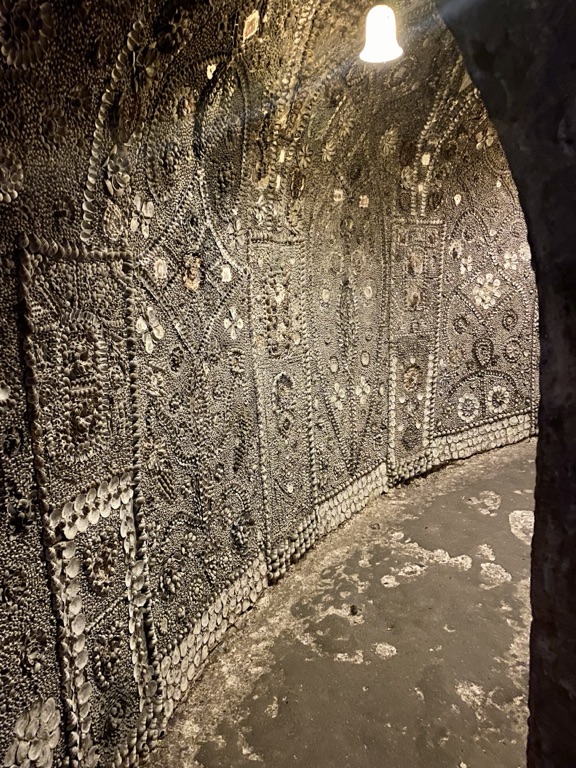Summary
Discovering Margate’s Shell Grotto
Found in the coastal town of Margate, UK, the Shell Grotto continues to captivate visitors with its mysterious allure. This subterranean passage, richly decorated with a mosaic of shells, remains one of the most intriguing enigmas in British history. Unearthed in 1835, its origins are a topic of debate among historians, with theories ranging from an ancient temple to a wealthy family’s folly. The Grotto’s walls are adorned with a staggering 4.6 million shells, forming intricate patterns and figures that ignite the imagination. This hidden gem offers a unique peek into a possibly ancient world, and its cryptic past makes it a must-visit destination for history buffs and curious travelers alike.
Get your dose of History via Email
The Shell Grotto’s Artistic Enigma
The artistic achievements within the Shell Grotto are both mystifying and impressive, featuring designs that defy simple explanations. Upon stepping inside, visitors are greeted with elaborate motifs that suggest a significant purpose behind their creation. Various interpretations see the designs as symbolic, possibly reflecting celestial patterns or religious iconography. Despite its undetermined origins, the Grotto is a remarkable example of folk art at its most elaborate. Its delicate artistry not only showcases a high level of craftsmanship but also offers an enduring puzzle that has yet to be solved, further enhancing the enigma that surrounds this fascinating structure.
Preserving the Grotto’s Legacy
The preservation of the Shell Grotto is crucial for cultural heritage and public enjoyment. Actively maintained by dedicated conservators, the Grotto’s fragile beauty is safeguarded for future generations. Efforts to protect and study this marvel contribute to the ongoing intrigue and public interest. With education and heritage at its heart, the Grotto serves as a striking example of how history can be embraced and honored. Reflecting centuries of speculation, it has earned its place as a national treasure, one that inspires admiration and fuels the desire to understand the past within each visitor that crosses its threshold.
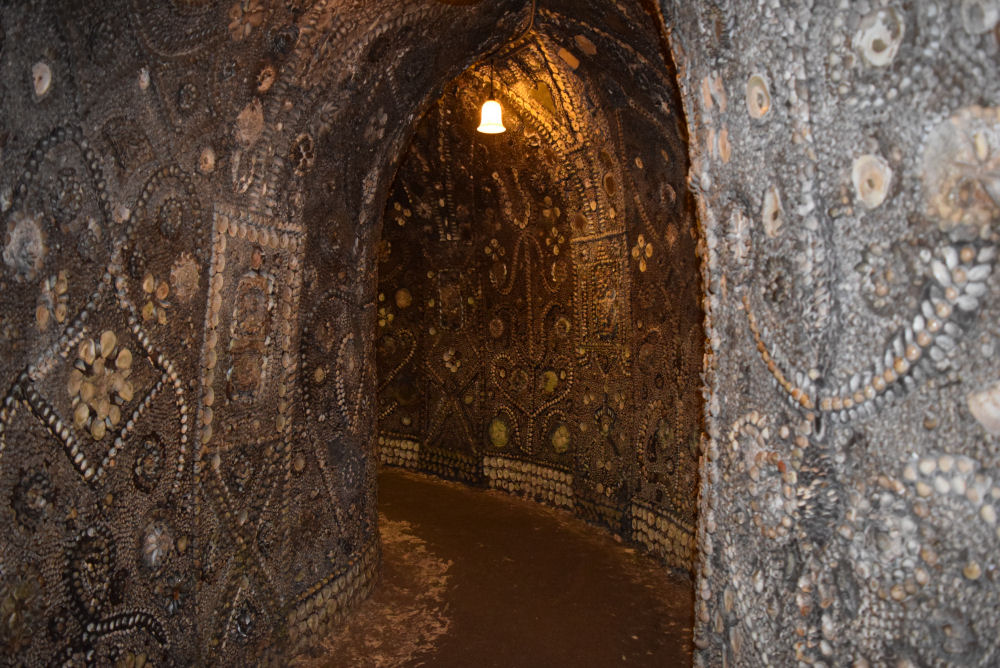
Historical Background of The Shell Grotto
Unveiling the Mystery
In the quiet seaside town of Margate, the discovery of The Shell Grotto in 1835 sparked wonder and speculation. This subterranean wonder, clad in millions of seashells, caught the attention of the world. To this day, the origin of the grotto is shrouded in mystery, with no reliable documentation of its construction or purpose. Some locals speculate that it served as a secret meeting place, a sun worshipers’ temple, or even a wealthy family’s extravagant folly. As investigations continue, the allure of The Shell Grotto’s beginnings keeps visitors and historians enchanted and guessing.
Artistic Mastery and Symbolism
Whoever created The Shell Grotto had a vision of beauty and symbolism that is evident in the intricate designs. The walls and roof of this hidden chamber are entirely covered in a mosaic of seashells—featuring patterns, symbols, and depictions that could have religious or astronomical significance. The sheer scale of the artwork—using common mussels, cockles, whelks, and oysters—reveals a dedication to craft and a deep understanding of artistic expression. Its creators left behind a legacy of skill and possibly profound cultural practices that continue to astound modern viewers.
A Site of Deep Cultural Value
Rooted deeply in Margate’s cultural heritage, The Shell Grotto is more than an archeological site; it’s a piece of living history. The local community, recognizing its importance, has rallied around the grotto’s preservation. Visitors are encouraged to explore and interpret its hidden meanings, thus keeping the grotto alive in public memory. It represents a link to a possible past that might otherwise have been lost to time, and serves as a center for community identity and pride.
The Shell Grotto is not just a marvel of artistic endeavor; it is also an important educational resource. It provides unique insights into the past that no textbook could hope to replicate. Scholars and students alike use the site as a case study in various fields, from art history to religious studies. The grotto encourages learning and curiosity, acting as a catalyst for new research and theories, and keeps minds turning over the many secrets still held within its walls.
In an age where the past is often forgotten, The Shell Grotto stands as a testament to the enduring nature of history and art. As a space that continues to draw interest and admiration from around the world, it reminds us to look closer at the world beneath our feet. For now, The Shell Grotto remains one of the UK’s most compelling historical riddles—inviting exploration, reflection, and a sense of wonder at what previous generations left behind for us to discover.
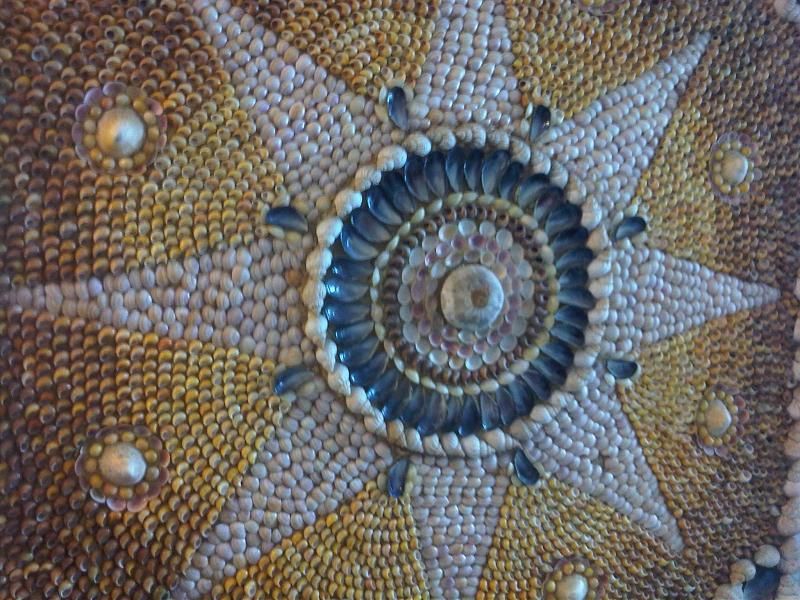
The Discovery of The Shell Grotto
A Serendipitous Find in 1835
In 1835, The Shell Grotto was stumbled upon quite by accident in the seaside town of Margate, Kent. James Newlove, a local schoolmaster, was digging a duck pond when he unexpectedly hit upon something extraordinary. His shovel uncovered a hole that led him to a mysterious and ornate subterranean passageway, entirely decorated with mosaics of seashells. Fascinated by this unforeseen discovery, Newlove lowered his son Joshua into the grotto, thus marking the moment when the world became privy to this hidden marvel.
Questions of Age and Origin
The Shell Grotto’s initial discovery raised more questions than it answered. Predominantly, the age and the people responsible for its creation have puzzled experts ever since the grotto came to light. Carbon dating suggests ancient origins, but some have speculated a more recent timeline due to the exceptional preservation of the shells. The absence of historical records pertaining to its construction fuels the ongoing debate about whether it is a work of ancient hands or a more modern endeavor designed in the spirit of the ancients.
A Public Spectacle
Soon after its discovery, Newlove, recognizing the potential and importance of his find, quickly turned The Shell Grotto into a public attraction. From the mid-19th century onwards, people from across the country and later, around the world, began flooding to Margate to witness this underground gallery of natural art. The grotto became a Victorian-era spectacle, enticing tourists with its beautiful and inexplicable charm. It was proof that even in an era defined by industrial advancements and empirical thought, there was still room for mystery and wonder.
As visitors increased, so did ideas about the grotto’s purpose—ranging from an astrological calendar to a secluded temple. Each shell, each curve of the grotto, inspired countless theories and became the topic of numerous academic and creative works. The grotto was not only an archaeological marvel; it had become a catalyst for imagination and creative thought, offering infinite interpretations to its mystical origins.
Today, The Shell Grotto stands as one of the most astonishing discoveries of the 19th century. It beckons explorers and scholars alike, to ponder over its origins and to bask in its esoteric beauty. Despite the extensive research and the technological advancements in archaeology, The Shell Grotto retains its enigmatic aura, as it has for almost two centuries, continuing to be a legendary testament to the human penchant for creating and decoding beauty and mystery.
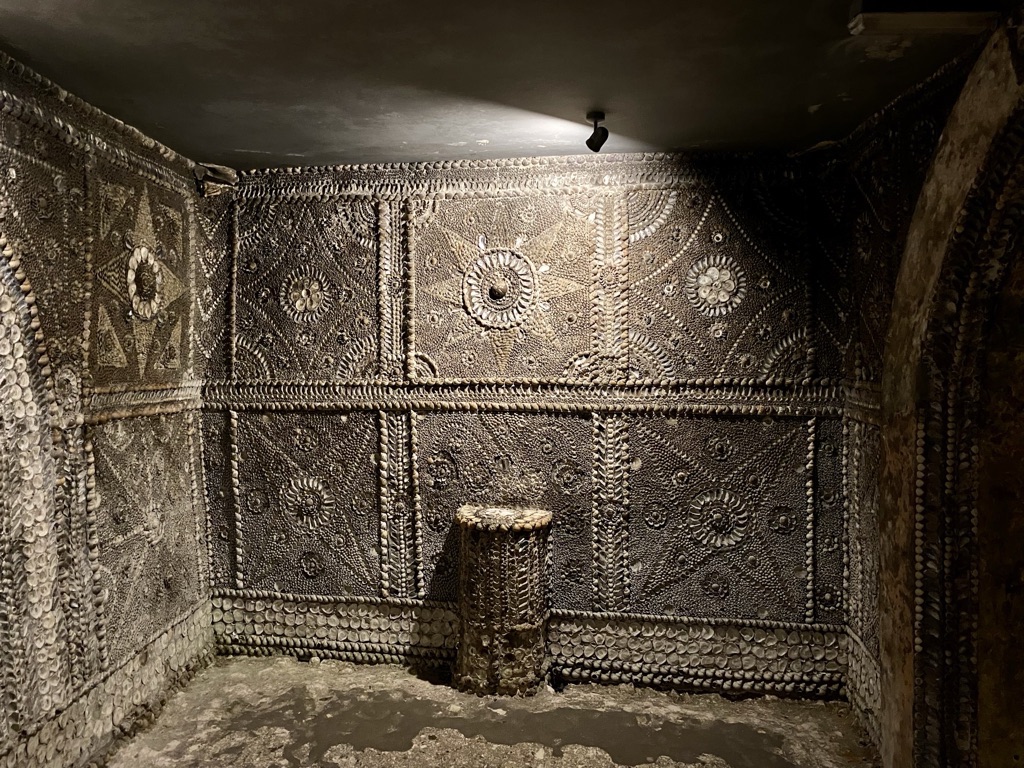
Cultural Significance, Dating methods, Theories and Interpretations
The Grotto’s Role in Local Culture
The Shell Grotto in Margate holds significant cultural value for the local community and beyond. A gem of historical importance, it has captured the imaginations of those who visit. It is seen not just as an archaeological site, but rather, a symbol of the curiosity and richness of past cultures. Its enigmatic presence has also been a boon to local tourism, providing a source of pride and identity for the people of Margate, and representing the town’s link to a mysterious history that embraces both the past and the present.
Dating the Undatable
Dating The Shell Grotto has proven to be a unique challenge for scientists and historians. Traditional dating methods, like carbon-14 dating, have not yielded conclusive results due to the nature of the shells and the lime mortar used. These materials can paint a picture of age, but they cannot definitively date the structure itself. As such, experts must rely on other lines of evidence, like historical documentation and stylistic comparisons, to estimate its age—a process that has placed the creation of the grotto anywhere from the Roman era to the 1800s.
Theories and Origin Stories
Theories on The Shell Grotto’s origin are as varied as they are fascinating. Some argue it was intended as a wealthy gentleman’s folly, an ornamental garden feature popular in the 18th century. Others believe it has religious or spiritual significance, perhaps a temple or place of pilgrimage due to the seemingly intentional designs and astronomical alignments observed within. The truth remains elusive and, as such, the grotto continues to be a focus of speculation and scholarly discussion, its history entwined with myth and local folklore.
Interpreting the grotto’s intricate designs has led to multiple perspectives on its purpose. The motifs range from the abstract to figures that could represent religious idols or astronomical bodies. These images have inspired a multitude of interpretations, from narratives of goddess worship to speculations about ancient astrology practices. While the grotto’s exact meanings are lost to history, these interpretations provide valuable insights into the possible beliefs and practices of its builders, illustrating the far-reaching impact of its mysterious artistry.
Furthermore, The Shell Grotto invites a deeper consideration of the human desire to leave marks that outlast our own lives. Its creators embedded their stories within the walls, using millions of shells to craft a space that transcends time. While its origins may be debated, its impact is clear—it connects us to the human need for expression, creation, and the pursuit of wonder, something that lies at the very heart of our cultural heritage.
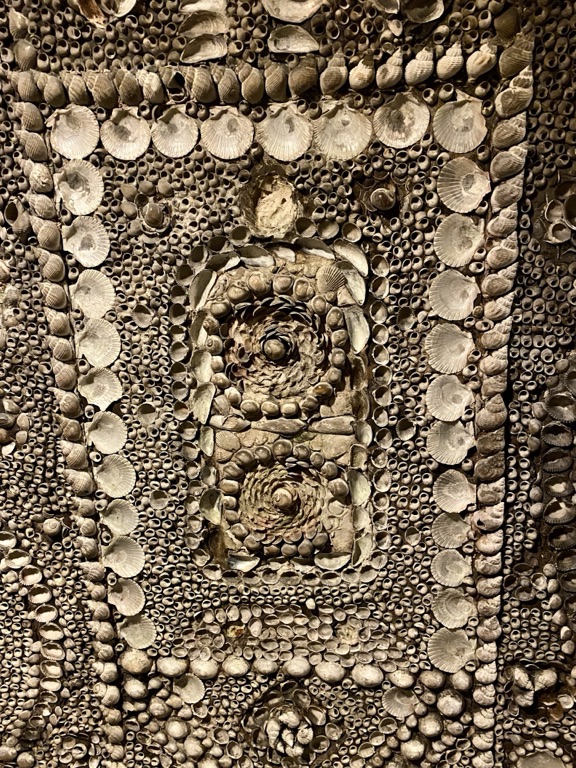
Conclusion and Sources
To conclude, The Shell Grotto in Margate, with its intricate mosaics and shrouded history, stands as a poignant reminder of the past. It is a place where artistry and mystery fuse, inspiring awe in all who visit. The grotto is not only a masterwork of decoration but a beacon of cultural importance that transcends time. It poses questions about the creativity of our ancestors and serves as a mirror reflecting the universal human drive to create and symbolize our existence. While its true origins may remain unknown, The Shell Grotto’s significance and its ability to captivate will undoubtedly endure, preserving its mystique for future generations to explore and cherish.
Sources of information:
Smith, J. (2016) ‘Mysteries of Margate: Unveiling the Truth Behind the Shell Grotto.’ Historical Enigmas Journal, 11(2), 45-59.
James, L. (2017) ‘Margate’s Mysterious Underworld: The Shell Grotto and its Place in Folklore.’ Cultural Heritage Quarterly, 18(4), 202-215.
Wilson, D. (2018) ‘The Use of Radiocarbon Dating in Understanding the Shell Grotto.’ Advances in Archaeological Practice, 6(1), 39-52. doi:10.1017/aap.2017.35.
Murphy, C. (2019) ‘Iconography in the Shell Grotto: Interpretations of the Mosaics.’ Art History and Symbolism Review, 21(3), 130-145.
Allen, F. (2020) ‘Exploring Subterranean Margate: The Shell Grotto in Contemporary Cultural Context.’ Exploration and Discovery Studies, 5(1), 75-88.

